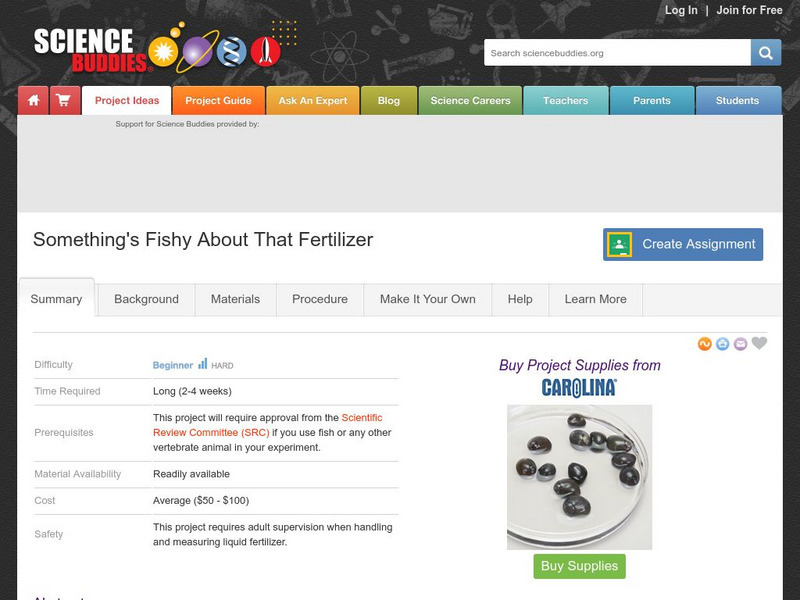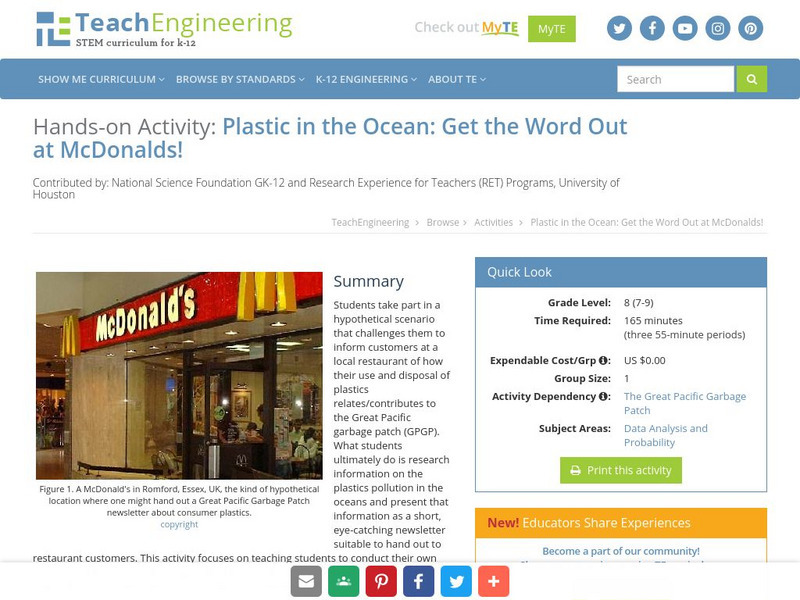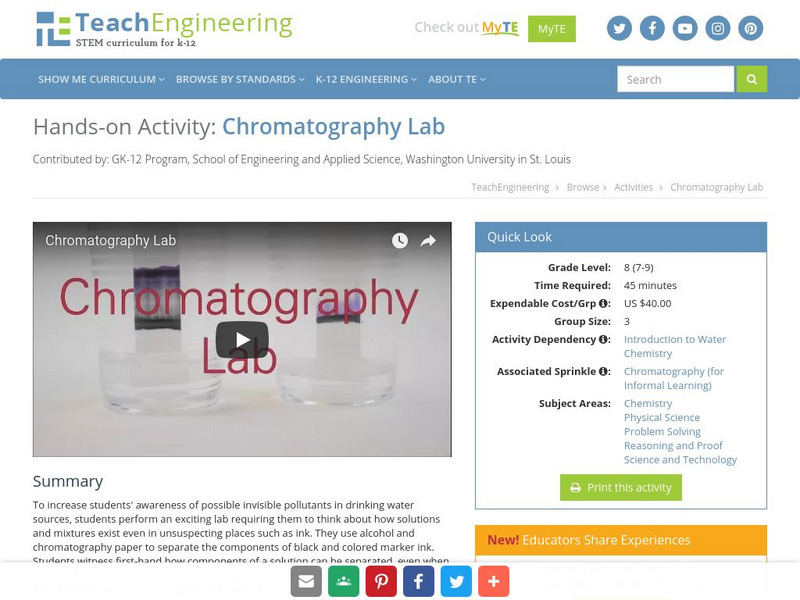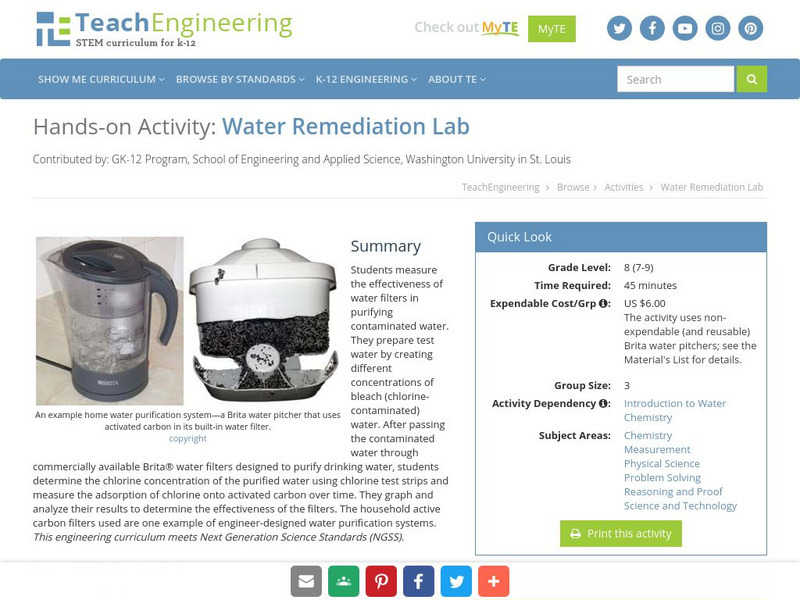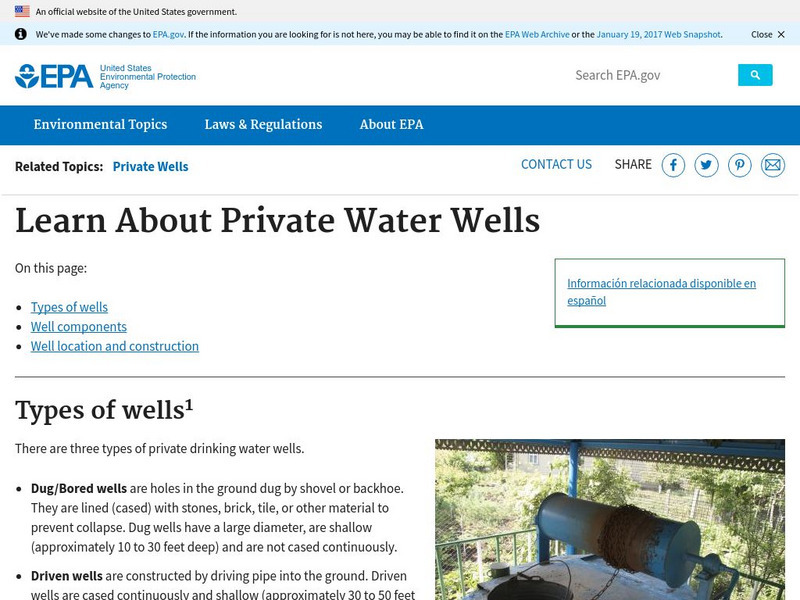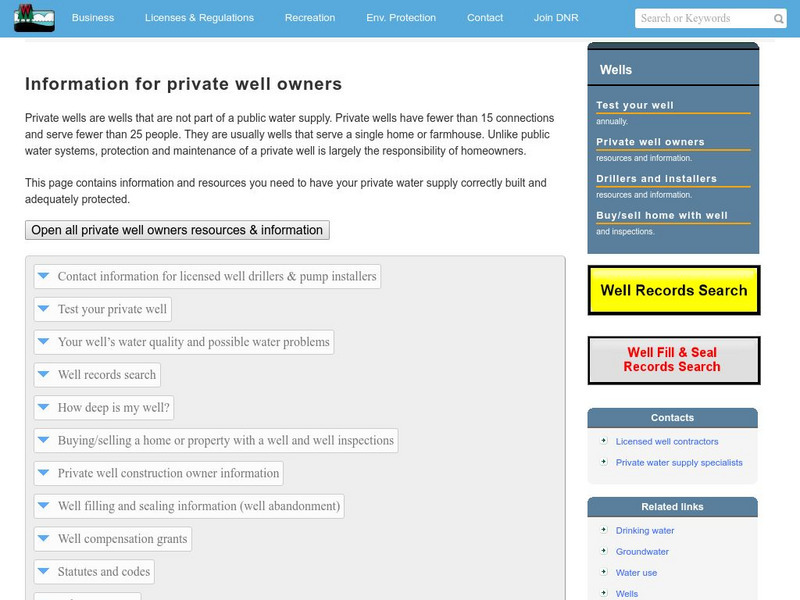Curated OER
Air Quality: Everyone's Responsibility
Middle schoolers identify and interpret the causes of air pollution in their local community. They collect and analyze data to identify pollutants in the air and seek solutions to eliminate the contaminants in the atmosphere. Finally,...
Curated OER
From Ground to Water
Learners explore groundwater and issues relating to groundwater. They discus the problems involving groundwater. Students write a newspaper story addressing groundwater problems. They create a comic strip addressing groundwater...
Curated OER
Do You Drink It?
Students explore the aquifer. They create a model of an aquifer and explain how a well works. Students explore the relationship between a well and the water table. They explore the various ways that groundwater becomes contaminated.
Curated OER
Pollutants and Contaminants
Students define pollution and contaminants by constructing a Definition and Concept Trail that illustrates how they are connected to health. They give examples of health issues during the Industrial Revolution by conducting textbook...
Curated OER
Science: Testing Water for Toxicity
Students investigate the potential toxicity of water samples using California blackworms to test water quality. They observe the worms' behaviors in different water samples and determine which sample has the highest toxicity. At the...
Curated OER
The Numbers Game
Students examine how to calculate the part-per-million and part-per-billion units used to measure contaminant concentrations in the environment. They calculate ratios, take a quiz, analyze a sample chemical spill, and determine if...
Curated OER
What's Gotten Into You?
Students use models to investigate the process and consequences of water contamination on the land, groundwater, and plants.
Curated OER
The Water in Our Lives: Kit Practice
Learners examine a local water source using testing kits to determine water qualitiy. They identify the pollutants and contaminants in each sample. They determine if samples fall within an acceptable range for drinking water.
Curated OER
There Must Be Something in the Water
Students read a New York Times article as a class and discuss how groundwater near a nuclear test site may have been contaminated. They explore how groundwater contamination can spread through aquifers by participating in a simulation.
Curated OER
Finding and Measuring What You Can't See
Students determine how scientists measure pollutants in food and the environment. Students discover how scientists remove one material based on its physical properties. Students figure out how much of a pollutant is present after...
Science Buddies
Science Buddies: Something's Fishy About That Fertilizer
Did you know that when you use fertilizer in your garden, it can eventually reach a lake, stream, or pond? There are many different chemicals present in fertilizers. Learn how they affect the aquatic organisms in the ecosystem within...
Environmental Chemistry
Evironmental chemistry.com: Grown Ups Don't Do Blue Goo
Tells the story of Love Canal, NY and the contamination that was happening there and what has been done about it recently.
US Geological Survey
Us Geological Survey: Bioremediation: Nature's Way to a Cleaner Environment[pdf]
Excellent information provided by the U.S. Geological Survey.
TeachEngineering
Teach Engineering: Get the Word Out at Mc Donalds!
Students take part in a hypothetical scenario that challenges them to inform customers at a local restaurant of how their use and disposal of plastics relates/contributes to the Great Pacific garbage patch (GPGP). What students...
TeachEngineering
Teach Engineering: Where Are the Plastics Near Me? (Field Trip)
An adult-led field trip allows students to be organized into investigation teams that catalogue the incidence of plastic debris in different environments. These plastics are being investigated according to their type, age, location and...
TeachEngineering
Teach Engineering: Where Are the Plastics Near Me? (Mapping the Data)
In a student-led and fairly independent fashion, data collected in the associated field trip activity are organized by student groups to create useful and informative Google Earth maps. Each team creates a map, uses that map to analyze...
TeachEngineering
Teach Engineering: Chromatography Lab
To increase students' awareness of possible invisible pollutants in drinking water sources, students perform an exciting lab requiring them to think about how solutions and mixtures exist even in unsuspecting places such as ink. They use...
TeachEngineering
Teach Engineering: Water Remediation Lab
Students measure the effectiveness of water filters in purifying contaminated water. They prepare test water by creating different concentrations of bleach (chlorine-contaminated) water. After passing the contaminated water through...
TeachEngineering
Teach Engineering: Biosensors for Food Safety
How can you tell if harmful bacteria are in your food or water that might make you sick? What you eat or drink can be contaminated with bacteria, viruses, parasites and toxins pathogens that can be harmful or even fatal. Students learn...
TeachEngineering
Teach Engineering: Introduction to Water Chemistry
Learners are presented with examples of the types of problems that environmental engineers solve, specifically focusing on water quality issues. Topics include the importance of clean water, the scarcity of fresh water, tap water...
US Environmental Protection Agency
Epa: Private Drinking Water Wells
Provides information on what to do after a flood to protect well water from contamination, the testing of private well water, and protecting private well water.
TeachEngineering
Teach Engineering: Who's Hitchhiking in Your Food?
How can you tell if harmful bacteria are growing in your food? Students learn to culture bacteria in order to examine ground meat and bagged salad samples, looking for common foodborne bacteria such as E. coli or salmonella. After 2-7...
Wisconsin Department of Natural Resources
Wdnr: Information for Homeowners With Private Wells
Provides information about water quality, contamination in private wells, well construction and pump installation for private wells, a list of laboratories certified to test for bacteria and other contaminants, recommendations for...
Other
State of California Department of Water Resources
This site discusses how the state of California is protecting their rivers and streams from contamination












